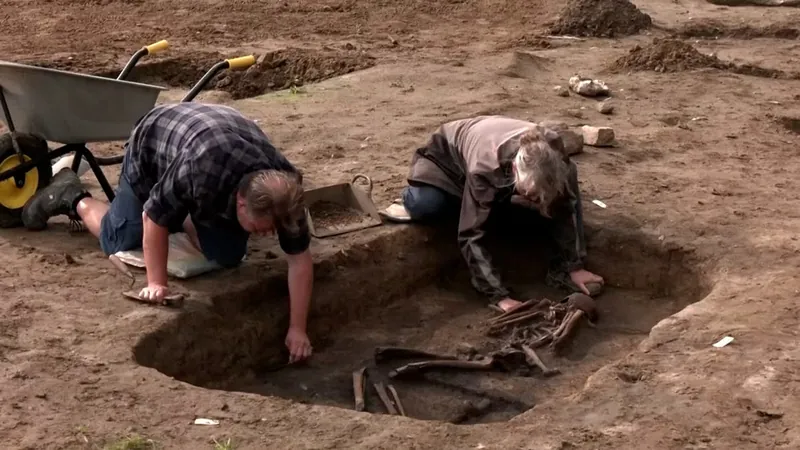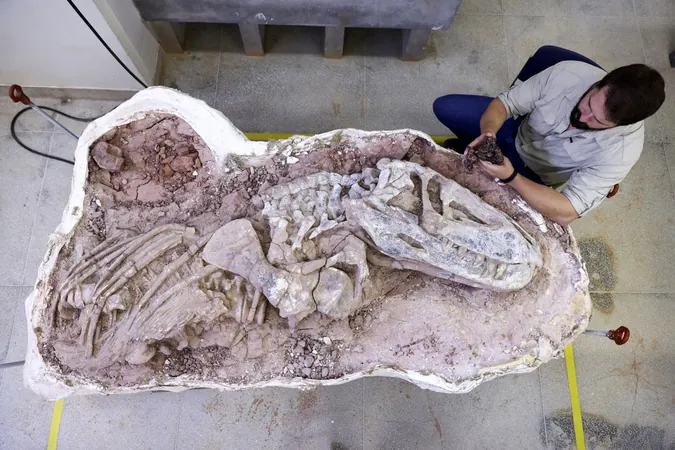
Skeletons of the Past: Archaeologists Discover 50 Viking Burials in Central Denmark!
2024-10-15
Author: Wai
Archaeological Discovery in Denmark
In an astonishing archaeological find, a recent excavation in central Denmark has revealed a staggering 50 well-preserved skeletons from the Viking era, sending shockwaves through the academic community and history enthusiasts. The discovery took place at a burial site called Åsum, near Odense, Denmark's third-largest city.
Excavation Details
The dedicated team from the Museum Odense spent over six months meticulously excavating a sprawling 21,500 square foot area that dates back to the 9th and 10th centuries. This remarkable site has provided invaluable insights into Viking life, culture, and burial practices, according to reports from major news outlets such as Reuters and CNN.
Remarkable Condition of Skeletons
Archaeologist Michael Borre Lundoe, who led the expedition, expressed his astonishment at the exceptional condition of the skeletons. "When we typically excavate Viking graves, we’re often lucky to find a couple of teeth among the artifacts. Here, we have whole skeletons that remain intact," Lundoe stated. The excellent preservation is attributed to favorable soil conditions and elevated water levels which shielded these ancient remains from decomposition.
Unearthed Artifacts
The excavation didn’t stop at human remains; it also unearthed an array of rare artifacts including intricately designed knives, beautiful glass pearls, and stunning brooches, all believed to date from 850 to 970 AD. These findings suggest that the Vikings were not only fierce warriors but also skilled traders who engaged in long-distance commerce.
High-Status Burial and Gender Roles
Among the buried individuals, most were thought to be farmers, with one intriguing exception: a high-status woman interred with a silver-ornamented knife and a rare glass piece. "Her grave tells an important story about her status and the significance of burial practices," Lundoe commented, hinting at the deep-rooted traditions surrounding death and honor in the Viking Age.
Adding further intrigue, archaeologists also found a decorative brooch alongside mineralized textile fragments, illuminating the styles of clothing worn by women during this historic period. This could potentially reshape our understanding of gender roles in Viking society.
Conclusion
The discoveries at the Åsum site highlight a remarkable chapter in Danish history and raise questions about the Vikings' far-reaching influence and connections. As the Museum Odense continues to study these extraordinary finds, the historical narrative of the Vikings may be on the cusp of exciting new revelations. Stay tuned for updates on these captivating discoveries!


 Brasil (PT)
Brasil (PT)
 Canada (EN)
Canada (EN)
 Chile (ES)
Chile (ES)
 España (ES)
España (ES)
 France (FR)
France (FR)
 Hong Kong (EN)
Hong Kong (EN)
 Italia (IT)
Italia (IT)
 日本 (JA)
日本 (JA)
 Magyarország (HU)
Magyarország (HU)
 Norge (NO)
Norge (NO)
 Polska (PL)
Polska (PL)
 Schweiz (DE)
Schweiz (DE)
 Singapore (EN)
Singapore (EN)
 Sverige (SV)
Sverige (SV)
 Suomi (FI)
Suomi (FI)
 Türkiye (TR)
Türkiye (TR)